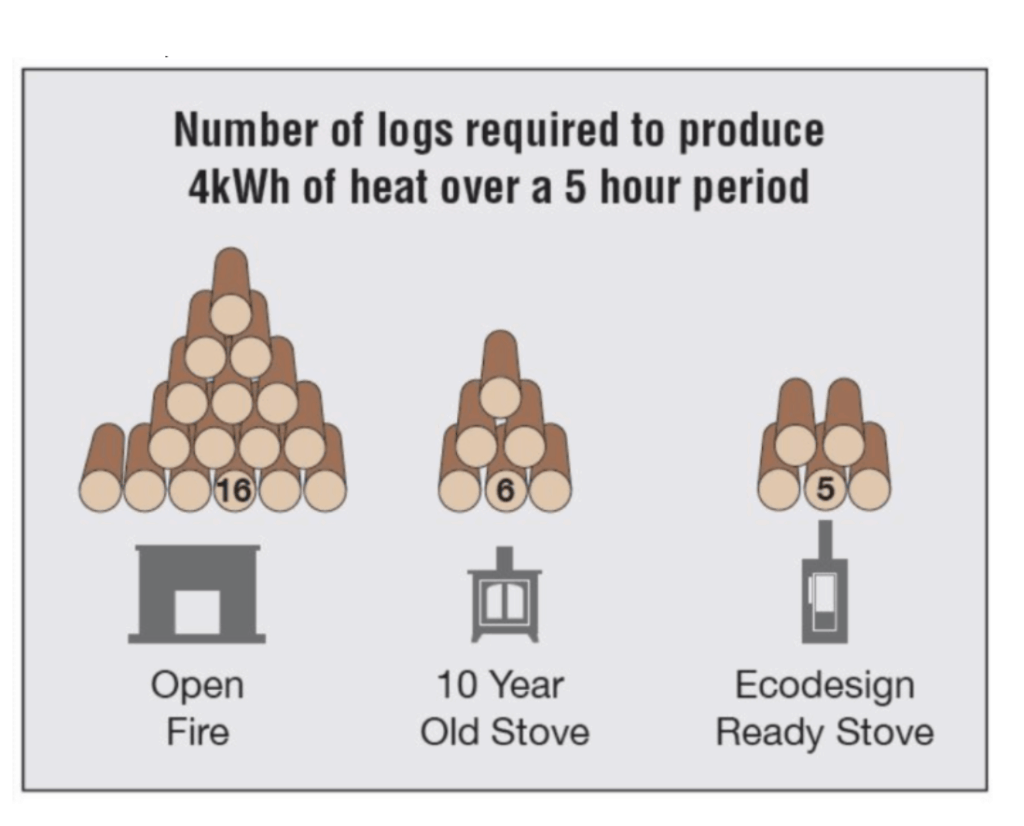In a government survey in 2015, it’s been thought that around 68% of burning wood in London is done so on open fires. Open fires are the most polluting ways to burn wood and create substantially more emissions, including deadly PM2.5 compared to a high-efficiency Ecodesign Ready stove. In a smoked controlled area, you are not allowed to emit smoke from your chimney unless you are using an exempt appliance or are burning smokeless or authorised fuels, which do not include wood or house coal.

Smoke Controlled Areas:
Many parts of the UK including London are smoke control areas where you cannot emit smoke from a chimney unless you’re burning an authorised fuel or using ‘exempt appliances’. You must not buy an unauthorised fuel for use in a smoke control area unless it is to be used in an exempt appliance.
You can be fined up to £1,000 if you break the rules.
In a smoke control area you can only burn fuel on the list of authorised fuels, or any of the following ‘smokeless’ fuels unless you’re using an exempt appliance:
.
- anthracite
- semi-anthracite
- gas
- low volatile steam coal
What is PM2.5?
Burning wood on an open fire increases the amount of particulate matter released into the atmosphere. Particulate matter (PM) describes the mixture of solid particles and liquid droplets in the air. It can be either man-made or naturally occurring. Examples of PM2.5 include dust, ash and sea spray. Particulate matter (including soot) is emitted during the combustion of solid and liquid fuels, such as for power generation, domestic heating and vehicle engines. Particulate matter varies in size (i.e. the diameter or width of the particle).
Smoke from open fires plays a large role in contributing to London’s air pollution problem. According to one study wood-burning on open stoves and old inefficient stoves accounts for between 23 and 31% of urban derived particulate matter (PM2.5) pollution in London.
Misinformation and unfair comparisons:
Some information in the media sadly still makes inaccurate claims about even Ecodesign Ready stoves such as « an Ecodesign stove was similar to the emissions from six Euro V1 HGVs. » This is simply not true, and to further add detriment to this statement, it fails to consider the NOx and other significant emissions, which a diesel lorry would far exceed when compared to a stove. An inaccurate unfair and misleading comparison. So while there are issues with burning wood, it’s the burning wood on open fires and old stoves, which need addressing.
According to Asthma UK and the British Lung Foundation, Councils in London need to be given the resources to tackle offenders of air pollution. They further add that the government need to do more to raise awareness about the dangers of air pollution so people can make informed choices.
Tracking offenders:
Richmond and Wandsworth councils both stated that existing legislation around the policing of smoke control areas makes it extremely difficult for local authorities to prove ‘beyond reasonable doubt‘ that what is being burned in someone’s home is non-compliant. This is a key reason why no one is really being held accountable for the flouting of these rules.
Furthermore, Greenwich council highlighted the problems with policing this too, they add ‘Wood burners tend to be used only in the winter months and smoke from a chimney can be difficult to spot in the dark. The wind can also carry the smoke odour, so the source is not always the same as the location reported to us.’
Awareness of the issues around burning wood on open fires is needed. Educating people is the way forward. As a company we continually work hard to highlight and educate people as to the differences between an open fire and an Ecodesign Ready stove in terms of pollution – we’ve done this tirelessly for years and will continue to do so.